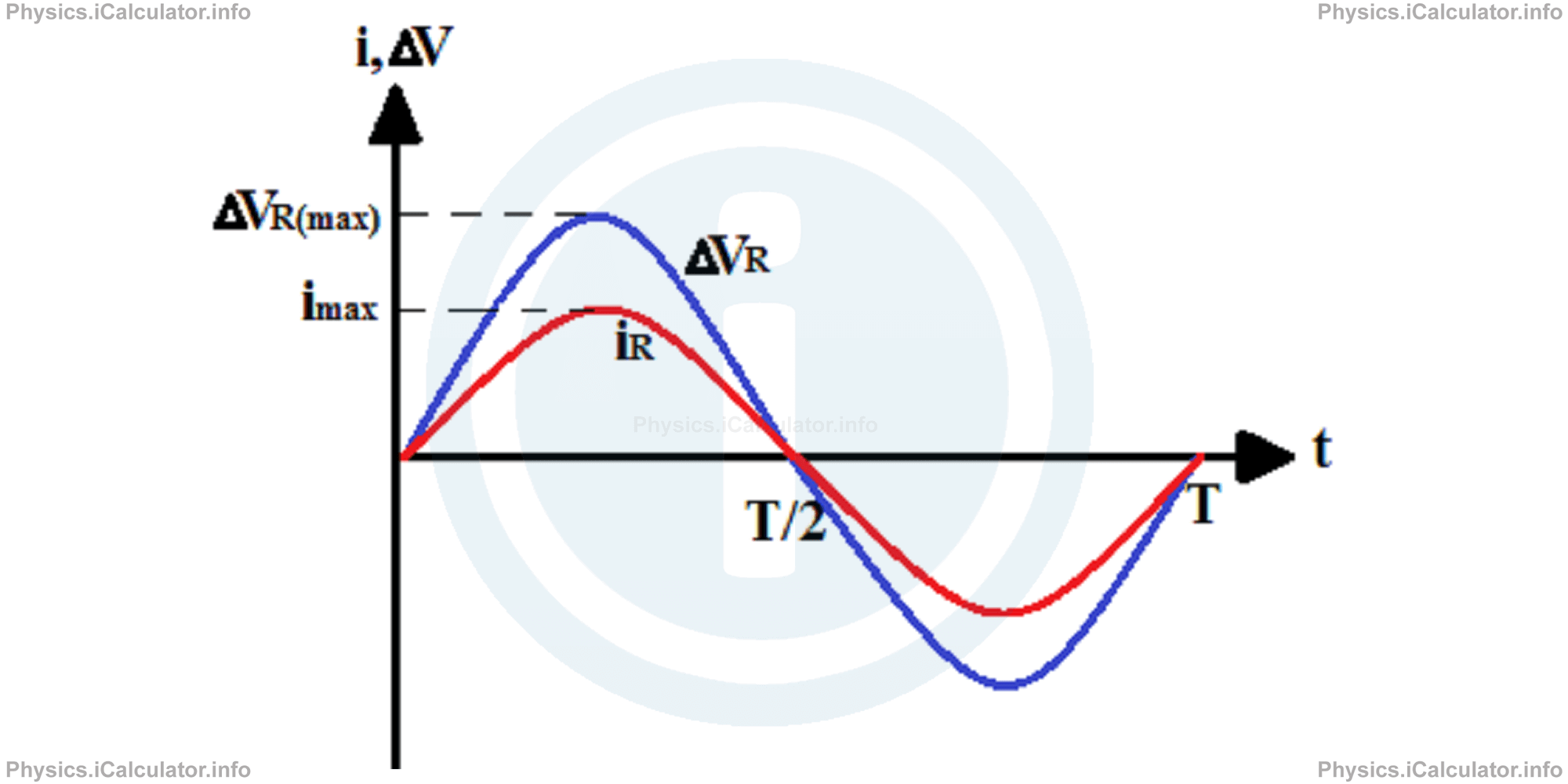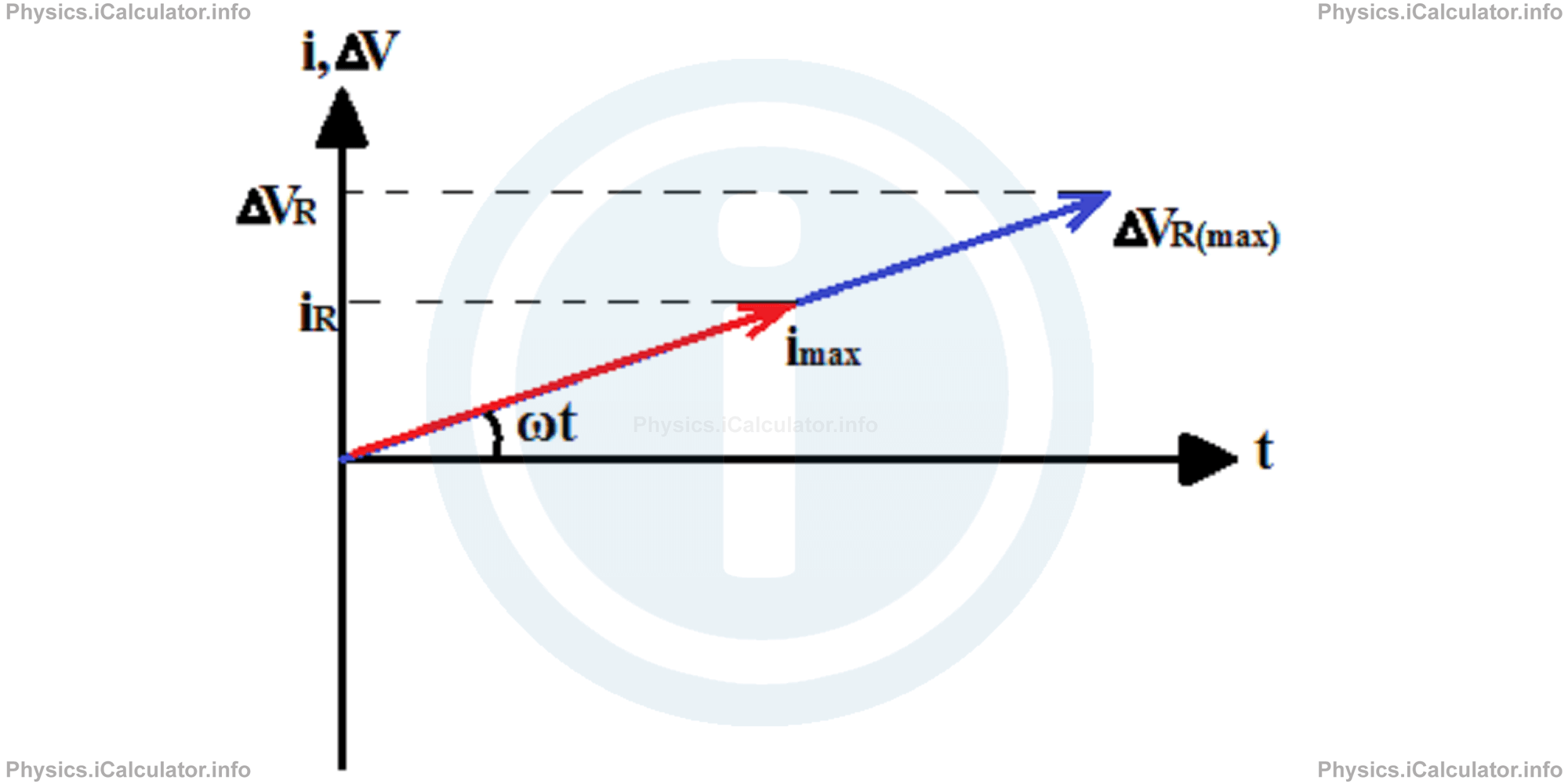Menu
Physics Lesson 16.16.4 - Resonance in a Series RLC Circuit
Please provide a rating, it takes seconds and helps us to keep this resource free for all to use
Welcome to our Physics lesson on Resonance in a Series RLC Circuit, this is the fourth lesson of our suite of physics lessons covering the topic of The Series RLC Circuit, you can find links to the other lessons within this tutorial and access additional physics learning resources below this lesson.
Resonance in a Series RLC Circuit
As stated earlier, resonance is a state of a RLC circuit in which the current and net emf are in phase. This occurs when XL = XC. The graph of voltage and current versus time in a situation involving resonance for a complete cycle is shown below.

The amplitudes may be different from those shown in the above graph; they depend on the corresponding values. This means the current graph may be above the voltage graph or they may have the same height, no matter which graph is higher. The graph above is only for illustration purpose.
We will show below the corresponding phasor diagram as well.

In absence of resonance, the graphs of current and voltage do not have their peak at the same time because either current is ahead of voltage (when the phase constant is negative, i.e. when the circuit is more capacitive than inductive), or it is behind the voltage (when the phase constant is positive, i.e. when the circuit is more inductive than capacitive). In such cases, the voltage and current phasors are not collinear, as discussed earlier.
Giving that during resonance XL = XC, we have after substitutions:
ωd2 = 1/L ∙ C
ωd = √1/L ∙ C = 1/√L ∙ C
This is the known equation obtained earlier for natural angular frequency of free oscillations. In this case, the oscillations are forced (driven) by the power source. This makes possible the generation of long-lasting (sustainable) oscillations, for which we can apply the approach used in free oscillations, as they do not fade with time.
As for the frequency of RLC circuit oscillations, we have (giving that ωd = 2π ∙ f):
Hence,
You have reached the end of Physics lesson 16.16.4 Resonance in a Series RLC Circuit. There are 5 lessons in this physics tutorial covering The Series RLC Circuit, you can access all the lessons from this tutorial below.
More The Series RLC Circuit Lessons and Learning Resources
Whats next?
Enjoy the "Resonance in a Series RLC Circuit" physics lesson? People who liked the "The Series RLC Circuit lesson found the following resources useful:
- Resonance Feedback. Helps other - Leave a rating for this resonance (see below)
- Magnetism Physics tutorial: The Series RLC Circuit. Read the The Series RLC Circuit physics tutorial and build your physics knowledge of Magnetism
- Magnetism Revision Notes: The Series RLC Circuit. Print the notes so you can revise the key points covered in the physics tutorial for The Series RLC Circuit
- Magnetism Practice Questions: The Series RLC Circuit. Test and improve your knowledge of The Series RLC Circuit with example questins and answers
- Check your calculations for Magnetism questions with our excellent Magnetism calculators which contain full equations and calculations clearly displayed line by line. See the Magnetism Calculators by iCalculator™ below.
- Continuing learning magnetism - read our next physics tutorial: Power in an Alternating Circuit. Transformers
Help others Learning Physics just like you
Please provide a rating, it takes seconds and helps us to keep this resource free for all to use
We hope you found this Physics lesson "The Series RLC Circuit" useful. If you did it would be great if you could spare the time to rate this physics lesson (simply click on the number of stars that match your assessment of this physics learning aide) and/or share on social media, this helps us identify popular tutorials and calculators and expand our free learning resources to support our users around the world have free access to expand their knowledge of physics and other disciplines.
Magnetism Calculators by iCalculator™
- Angular Frequency Of Oscillations In Rlc Circuit Calculator
- Calculating Magnetic Field Using The Amperes Law
- Capacitive Reactance Calculator
- Current In A Rl Circuit Calculator
- Displacement Current Calculator
- Electric Charge Stored In The Capacitor Of A Rlc Circuit In Damped Oscillations Calculator
- Electric Power In A Ac Circuit Calculator
- Energy Decay As A Function Of Time In Damped Oscillations Calculator
- Energy Density Of Magnetic Field Calculator
- Energy In A Lc Circuit Calculator
- Faradays Law Calculator
- Frequency Of Oscillations In A Lc Circuit Calculator
- Impedance Calculator
- Induced Emf As A Motional Emf Calculator
- Inductive Reactance Calculator
- Lorentz Force Calculator
- Magnetic Dipole Moment Calculator
- Magnetic Field At Centre Of A Current Carrying Loop Calculator
- Magnetic Field In Terms Of Electric Field Change Calculator
- Magnetic Field Inside A Long Stretched Current Carrying Wire Calculator
- Magnetic Field Inside A Solenoid Calculator
- Magnetic Field Inside A Toroid Calculator
- Magnetic Field Produced Around A Long Current Carrying Wire
- Magnetic Flux Calculator
- Magnetic Force Acting On A Moving Charge Inside A Uniform Magnetic Field Calculator
- Magnetic Force Between Two Parallel Current Carrying Wires Calculator
- Magnetic Potential Energy Stored In An Inductor Calculator
- Output Current In A Transformer Calculator
- Phase Constant In A Rlc Circuit Calculator
- Power Factor In A Rlc Circuit Calculator
- Power Induced On A Metal Bar Moving Inside A Magnetic Field Due To An Applied Force Calculator
- Radius Of Trajectory And Period Of A Charge Moving Inside A Uniform Magnetic Field Calculator
- Self Induced Emf Calculator
- Self Inductance Calculator
- Torque Produced By A Rectangular Coil Inside A Uniform Magnetic Field Calculator
- Work Done On A Magnetic Dipole Calculator